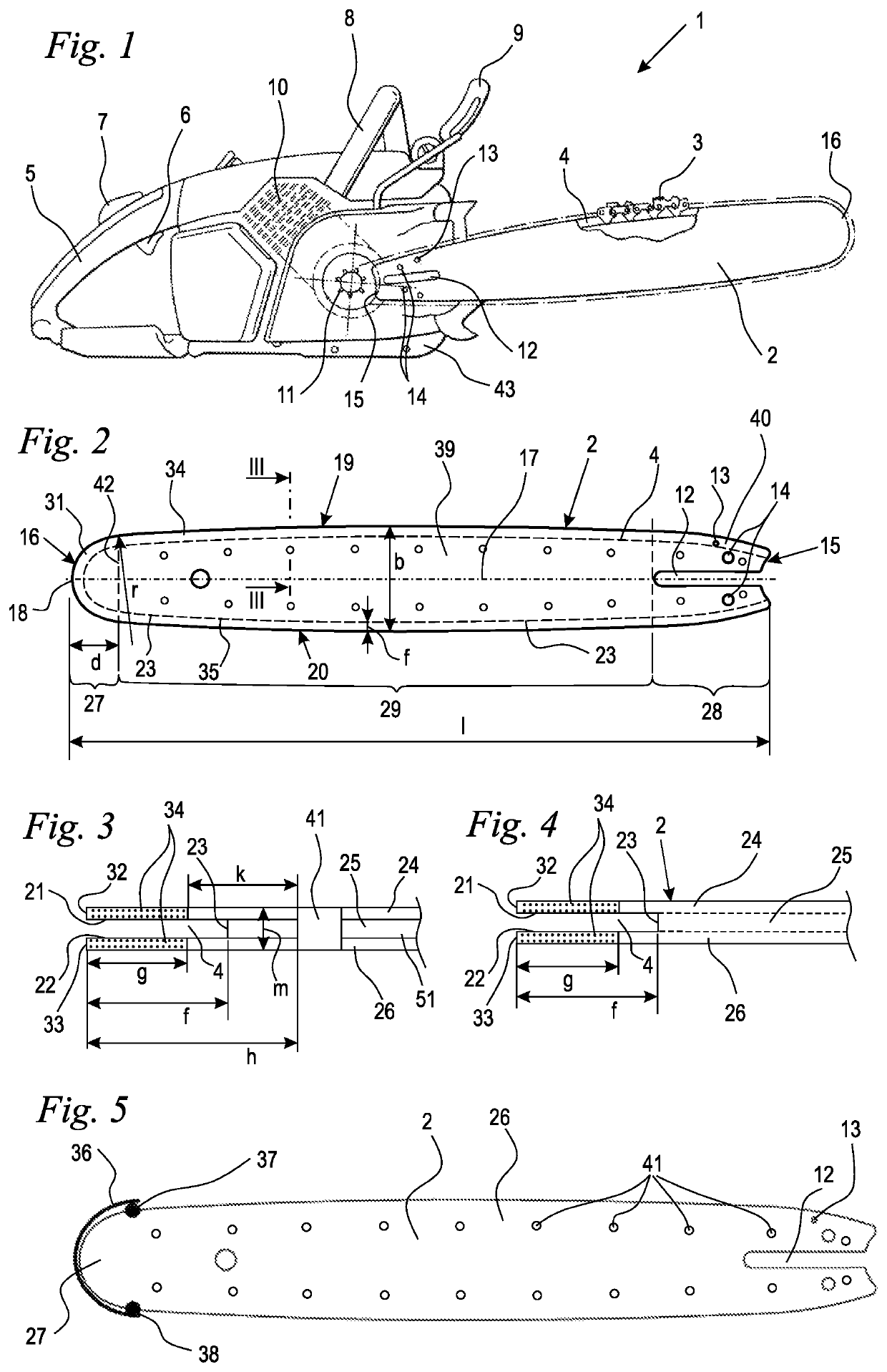Guide bar for a motor chainsaw and method for producing a guide bar
a technology of guide bars and chainsaws, which is applied in the direction of manufacturing tools, furnaces, heat treatment devices, etc., can solve the problems of large wear on the guide bars of motor chainsaws, large wear on the deflection section of the guide bars, and large wear on the guide bars
- Summary
- Abstract
- Description
- Claims
- Application Information
AI Technical Summary
Benefits of technology
Problems solved by technology
Method used
Image
Examples
Embodiment Construction
[0035]FIG. 1 shows schematically a motor chainsaw 1 comprising a guide bar 2. The guide bar 2 comprises a guide groove 4 in which a saw chain 3 is guided in circulation. The saw chain 3 is guided across a drive pinion 11 which in operation is rotatingly driven by a drive motor 10 and in this way moves the saw chain 3 in circulation about the circumference of the guide bar 2. The drive motor 10 is schematically illustrated in FIG. 1 as an internal combustion engine. The drive motor 10 however can also be an electric motor which is supplied with energy by a rechargeable battery or by a power cord. The guide bar 2 comprises a clamping end 15 with which the guide bar 2 is secured at a housing 43 of the motor chainsaw 1. The drive pinion 11 is positioned adjacent to the clamping end 15. The end of the guide bar 2 which is remote from the housing 43 forms a free end 16 at which the saw chain 3 is deflected. The guide bar 2 comprises near the clamping end 15 a guide slot 12 through which c...
PUM
| Property | Measurement | Unit |
|---|---|---|
| radius | aaaaa | aaaaa |
| length | aaaaa | aaaaa |
| length | aaaaa | aaaaa |
Abstract
Description
Claims
Application Information
 Login to View More
Login to View More - R&D
- Intellectual Property
- Life Sciences
- Materials
- Tech Scout
- Unparalleled Data Quality
- Higher Quality Content
- 60% Fewer Hallucinations
Browse by: Latest US Patents, China's latest patents, Technical Efficacy Thesaurus, Application Domain, Technology Topic, Popular Technical Reports.
© 2025 PatSnap. All rights reserved.Legal|Privacy policy|Modern Slavery Act Transparency Statement|Sitemap|About US| Contact US: help@patsnap.com


